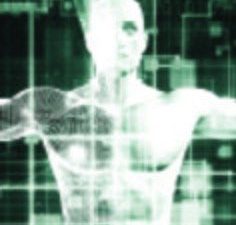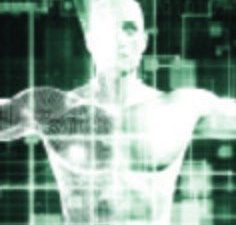Measure of Success
May 31, 2017


My induction to Third Space gym in London’s Soho involves standing on a futuristic-looking weighing machine and gripping two metal prongs while an electric current passes through me (thankfully, I can’t feel it). On the screen, the outline of a figure begins to fill in, and readings show what percentage water, protein, mineral and fat I am. I won’t share the numbers, but it was certainly enlightening.
Weight is a crude reading of one’s physical make-up, while BMI (body mass index), derived from your weight divided by your height, is not much better. Using this calculation, someone muscular could be considered obese because muscle is heavier than fat.
The InBody Analysis machine is more scientific, giving comprehensive readings of your entire physiology – whether your skeletal muscle mass is normal, how much visceral fat you have around your internal organs (not too much, hopefully), how much water is in your system (both intra- and extra-cellular), and the distribution of lean mass versus fat in arms, trunk and legs.
A typical gym induction might include a questionnaire about your lifestyle, the taking of a few vital statistics, and some advice on how to use the machines. At Third Space (thirdspace.london), which has four clubs in London, you won’t start training until your data has been analyzed. The body scanner will also provide a meaningful map of your progress – work hard, and after a month you will see an increase in muscle and a decrease in fat.
Third Space’s free “Out/Set” biometric assessment was developed by personal trainer Luke Worthington. For £150 (about $200), you can also take a DNA test to find out your genetic strengths and weaknesses. Worthington sets a series of exercises so he can see your movement capabilities.
“The purpose is to get as much information as possible about people before setting them loose in the gym,” he says. “I come from a professional sport background so my idea was to bring some of what we did in that world to the public. The industry is very goal-oriented – get the beach body, run the 10k, get to point B, but without any conception of what point A is. That was where we were going wrong. Not all beginners are rubbish at everything, and even someone very advanced will have weak spots.”
Track Your Progress
As the demand for personal training continues, we can expect more gyms to offer data-based programs – and more body scanning machines in reception. Fit3D scanners have recently been installed in high-end gyms such as Equinox, which has dozens of locations in the US, UK and Canada, while Styku 3D scanners are now available in more than 25 countries.
The technology is seen to be effective not only at getting people off the couch, but in motivating them to continue exercising as they see their body change. It also pairs well with wearable fitness trackers for real-time readings. In 2016, more than 50 million fitness trackers (not including smartwatches) were sold, according to research company CCS Insight. By 2020, they are expected to exceed 165 million.
“Apps and tracking devices have changed the way we approach exercise, making users more self-aware of their habitual movement,” says David Howaston, master trainer for fitness equipment manufacturer Technogym. “Technogym helps people to track their workouts via Mywellness.com. This [cloud-based platform] allows users to log into their own workout anywhere in the world, be it outdoors or in a hotel gym with Technogym Unity screens. When traveling, you can use the My Running Logbook to recreate your favorite outdoor run on a treadmill.”
Genetic Effect
The final piece in the puzzle is the role your genes play, and the good news is DNA testing has finally become affordable. For example, DNAFit (dnafit.com) interprets 30 genes and their variants. Anyone can order one online and a saliva sample will, for example, highlight the ACTN3 “power gene,” which is common in Olympic athletes, and the FTO “fat gene,” which determines how likely your body is to store saturated fat.
Other sensors are indicators of how resilient you are to sports injury and whether your body is better suited to power activity or endurance training.
If you don’t have access to a gym that provides you with a biometric workout, DNAFit can provide one for you virtually. Once you have your results, you can sign up for one of its “Elevate” programs (100 Day Fat Burner or 100 Day Muscle Builder), which use the “world’s first and only proven genetic training algorithm” to create a bespoke schedule.
Still, personal trainer and former Royal Marine Commando Philip McDougall warns that it’s also important to listen to your instincts. “Fitness tracking tools can help beginners to gauge things such as pace and distance, but I’m personally against tech being involved in fitness monitoring for regular exercisers, apart from a simple stopwatch or interval timer,” McDougall says. “Runners should plan their route, memorize distance markers and rely on feedback from their own bodies.”
TomTom Touch
This fitness tracker measures body fat and muscle mass composition, steps, calories, sleep time and heart rate. You can also log your workouts and receive incoming call/SMS notifications so you don’t have to worry about checking your phone.
$129.99, tomtom.com
MyZone MZ-3
This activity belt is worn around the chest, and claims to give more accurate heart rate readings than wrist trackers. When synced with its own app or the likes of Apple Health, you can view your effort readings and compare with friends.
$149.99, myzone.org
UP3 by Jawbone
Track your resting, passive and active heart rate, as well as deep, light and REM sleep. You can also log your food intake in the app and set alerts to encourage you to exercise if you need that extra boost. It comes in six colors, including black, silver and navy.
$179.99, jawbone.com
Moov Now
Designed to “coach” you with voice commands and real-time stats, Moov Now’s 9 Axis Omni motion sensor will track your form in 3D. It can assess your boxing technique, swimming stroke rate and the landing impact of your feet when running to help avoid injury.
$60, welcome.moov.cc
Samsung Gear Fit 2
This GPS sports band will track your running route independently of your smartphone so you can leave it at home. Its heart rate monitor will show you when you hit high-intensity zones and can tell the difference between cycling and elliptical trainers.
$179.99, samsung.com
Misfit Ray
You can swim in this fitness band, as well as track steps, calories and the distance and time you have run. Receive a phone call or message and it will vibrate. You will need to replace the batteries every four months.
$99.99, misfit.com
Garmin VivoFit HR+
Measure the number of floors you have climbed, get social media alerts and see how hard your heart is pumping. You can also view the routes you have walked or run on the app. Move IQ discerns between different types of motion.
$179.99, buy.garmin.com
UA Band
Under Armour’s device counts your steps, workout intensity and calories burned (and consumed, if you input what you eat). Set goals, see your progress and control the music you are listening to on UA wireless headphones.
$79.99, underarmour.com
FitBit Charge 2
Standout functions include GPS connection to your phone and SmartTrack, which records activities such as cycling and hiking. It also shows your cardio fitness score and creates guided breathing sessions in time with your heart rate.
From $149.95, fitbit.com
Microsoft Band 2
Calculates your running pace and personal bests, tracks the elevation of your bike ride, and uses GPS to show you how far away holes are from you on the golf course. Cortana voice-recognition is embedded.




